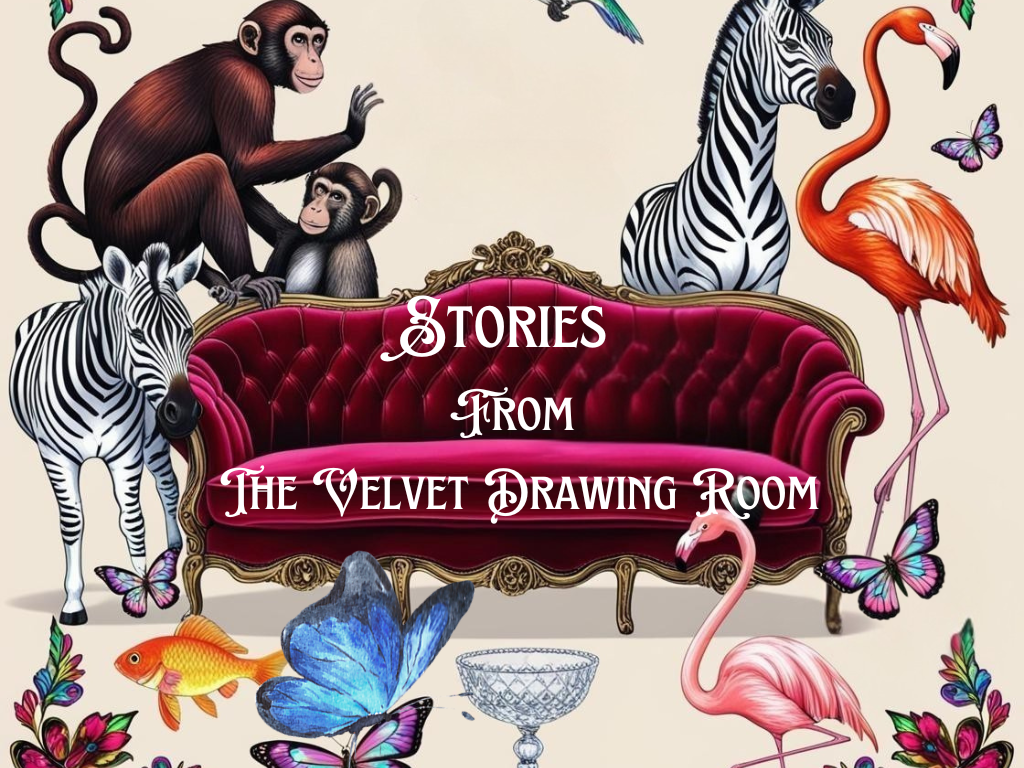The Extinct Huia - A world record price for a single case of taxidermy

photo credit: Tennants
THE EXTINCT HUIA FETCHED ABOUT A QUARTER OF A MILLION POUNDS inc fees
The cased pair of extinct Huia from New Zealand (Heteralocha acutirostris) circa late 19th century, by James E. Whiting caused a sensation when it sold for many times the estimated price at Tennant’s Auction on Friday 8 September 2023.
The sale price of £220,000 against the original estimate of £15,000 – £25,000 has the collectors and enthusiasts buzzing.
The male and female extinct huia were presented in a period glass case, perched on a branch and surrounded by hummingbirds, rocks and foliage.
But what drove this spectacular auction achievement? A mystery buying syndicate? Chinese millionaires? The answer is somewhat more interesting....
CULTURAL AND HISTORICAL IMPORTANCE OF THE EXTINCT HUIA
The cultural and historical importance of this extinct Huia bird to the Maori people of New Zealand cannot be overstated.
Historically a tail feather of the bird was given a high status gift.
And those of you who have been interested in this topic for a decade or two at least may remember back in 2011 when a single tail feather or sold for an astonishing 4,000 British pounds which at the time was a world record for any tail feather, and therein the likely explanation for the incredible price achieved for these two extinct Huia birds at the Tennants auction.
In simplistic terms it's not unlike the scenario where an a Victorian book of coloured plant or animal plates can easily be worth two to three times its value as a book if it's broken up and the individual plates sold separately. I don't know how many tail feathers these two birds combined would have and of course their provenance in still being attached to the bird is irrefutable!
But it explains the stratospheric bidding for these unusual items.
One can only hope on this occasion that the new owner of the extinct Huia case is someone with a cultural interest (who knows perhaps a member of the New Zealand All Blacks?) rather than a buyer looking to make a fast buck somewhere.
THE EXTINCT HUIA - A VERY SMART INVESTMENT
In June 2010 a single huia tail feather sold at auction in Auckland for NZ$8,000 – making it the world’s most expensive feather ever. The previous ‘record-holder’ was the American bald eagle, with an eagle feather selling for a mere NZ$4,000 at a US auction.
When we see this auction in the context of the status of the extinct Huia species and the auction of just one feather in 2020, then maybe we can understand the runaway price? The buyer and other bidders certainly understood this, and the replay of some of the video auction bears witness to their confidence.
I hope that this case of extinct Huia birds does find its way back to New Zealand, either via an investment from a museum or some high-profile buyer with NZ origin.
It seems only just and fair.
CONTROVERSY
It’s not known who the successful bidder was, but a month before the auction took place, there had been calls in New Zealand by distinguished leaders of the Māori community for the birds to be repatriated and it had also been suggested that the museums in New Zealand, like Te Papa, should work together to obtain them and bring them home.
The appetite for such rare natural history is a testament to the ever-growing public interest in environmental history and the allure of objects that give us a glimpse into a world now lost.

The downfall of the extinct Huia
(content credit www.predatorfreenz.org)
The popularity of the now extinct huia’s bold black and white tail feathers was a key part of its downfall. It was an avian victim of fashion, with avid collectors helping to drive it to extinction. Habitat destruction and introduced predators had an impact as well.
But there was much more to the huia than a bold stripe to its 12 long tail feathers.
The huia was a songbird about the size of a magpie – the largest of our wattlebirds and a relative of the tīeke (saddleback) and kōkako. Its head and body feathers were black with a glossy green-blue metallic sheen. It had orange wattles that grew from the base of the bill, and long strong legs which helped it hop, jump and bound about the forest. In contrast to its champion leaping ability, it was a weak flier, with short, rounded wings, much like the kōkako.
The striking beaks of the extinct Huia
But most striking of all was its beak – or at least beaks – because the bills of males and females were very different in both size and shape. Males had a robust pale ivory tapering bill shaded bluish-grey at the base while females had a longer, finer decurved bill. The female’s bill was 85-104 mm long; the male’s heavier, less-curved bill was 54-60 mm.
Huia mainly consumed wood-dwelling insects and their larvae, including huhu, wētā, mantis, butterfly, also spiders, taken from decaying wood, bark, lichen, moss, ferns and the ground. They also ate native forest fruits, including hinau, pigeonwood, Coprosma, and kahikatea. They used their beaks to feed in different ways. Male huia used their bills as a “pick-axe” to dig into decaying wood, exposing and extracting huhu larvae and other insects. Females probed deeper using their longer, more decurved bill to extract larvae from more solid wood. One theory for the difference in bill shapes is that chicks were mainly fed by the female who used her bill to reach high-protein nutritious larvae for her young.
So marked was the difference in bills, that in 1936 ornithologist John Gould described male and female as two different species. The huia had the most extreme sexual bill dimorphism of any known bird species. Sadly this made them of even greater interest to collectors.
Both Māori and Europeans valued and hunted the huia. The bird was regarded by Māori as tapu, and the wearing of its skin or feathers was reserved for people of high status. Māori attracted the huia by imitating its call and then captured it with a tari (a carved pole with a noose at the end) or snare, or killed it with clubs or long spears.
Although the huia lived only in the southern North Island, its tail feathers were valued highly and were exchanged among tribes for other valuable goods such as pounamu and shark teeth, or given as tokens of friendship and respect. The feathers reached the far north and the far south of New Zealand through trading and were stored in intricately carved boxes called waka huia, which were hung from the ceilings of chiefs’ houses. Dried huia heads were also worn as pendants called ngutu huia.
A captured huia would sometimes be kept in a small cage so that its tail feathers could be plucked as they grew to full size. The bird was also kept by Māori as a pet, and like the tui, it could be trained to say a few words.
Māori were also the first to try and save the huia from extinction. There were successive sharp declines in numbers of huia in the 1860s and in the late 1880s, prompting the chiefs of the Manawatu and the Wairarapa to place a rāhui on the Tararua Range. In February 1892, the Wild Birds Protection Act was amended to include the huia, making it illegal to kill the bird, but enforcement was not taken seriously.
Tail feathers became fashionable in Britain after the Duke of York was photographed wearing one during a 1901 visit to New Zealand. At an official Māori welcome in Rotorua, a guide took a huia tail feather from her hair and placed it in the band of the Duke’s hat as a token of respect. And so a new fashion trend was launched in both England and New Zealand. The price of tail feathers was soon pushed to £1, making each bird worth £12 (12 feathers per tail), and some feathers sold for as much as £5. Female huia beaks were also set in gold as jewellery.
Shooting season notices ceased listing the huia as a protected species in 1901 – so much for the 1892 Wild Birds Protection Act – and a last-ditch attempt to reinforce government protection failed when the solicitor general ruled that there was no law to protect feathers.
Overseas bird collectors and museums bought mounted specimens and tail feathers. Austrian naturalist Andreas Reischek took 212 pairs between 1877 and 1889. New Zealand naturalist Walter Buller recorded that 11 Maori hunters took 646 huia skins from forest between Manawatu Gorge and Akitio during one month in 1863. Gilbert Mair recorded eating “a splendid stew of Huia, Kaka, Pigeons & Bacon” with Buller at a bush camp in Wairarapa, October 1883, after shooting 16 huia and capturing live birds.
credit: Wikimedia Commons
What have we lost?
Thousands of huia were exported overseas and plans to move birds to sanctuary islands never eventuated. A pair captured in 1893 for transfer to Little Barrier was instead appropriated by Walter Buller, who bent the law to take them back to England as a present for Lord Rothschild, along with the last collected live pair of laughing owls.
The huia’s tale is a human-induced tragic one – but what do we know about the lives of the birds themselves? What have we lost?
Like the kōkako, the huia was a songbird extraordinaire, with a male and female having different calls. Huia were thought to pair for life and a pair would sing ‘duets’ to each other, alternating their calls. The melodious and flute-like calls could be heard up to 400 m away. If one bird was caught, its calls were used to lure in its mate, so that it was easily captured too.
Walter Buller once had a captive pair and wrote of their devotion to each other. When the male of was accidentally killed, the female “manifesting the utmost distress pined for her mate and died 10 days afterwards”. A Māori man in the 19th century recalled: “I was always told by my old people that a pair of huia lived on most affectionate terms … If the male died first, the female died soon after of grief”.
The huia was once common in the North Island, but absent from the South Island. Genetic studies suggest huia had “moderate to high” historical population of 34,000 to 89,000 birds; probably higher pre-human settlement. They were widespread but sparse after European settlement, in the eastern North Island from Huiarau south, with most records from the Ruahine, Tararua and Rimutaka ranges and northern Wairarapa, and also from the hills around Wellington.
THE LAST WORD
One final twist in the extinction story of the huia, is that it wasn’t just the huia that became extinct. When the huia died, its parasites died out too – an invisible extinction unmarked and unmourned at the time. One of those parasites was only discovered in the 21st Century.
Rallicola extinctus, a species of parasitic louse, was only known to live on the huia, and apparently became extinct with its host, while in 2008, a new species of feather mite, Coraciacarus muellermotzfeldi, was described from dried corpses found in the feathers of a huia skin held by a European museum.
When will we learn?
Discover more from thevelvetdrawingroom.co.uk
Subscribe to get the latest posts sent to your email.




















